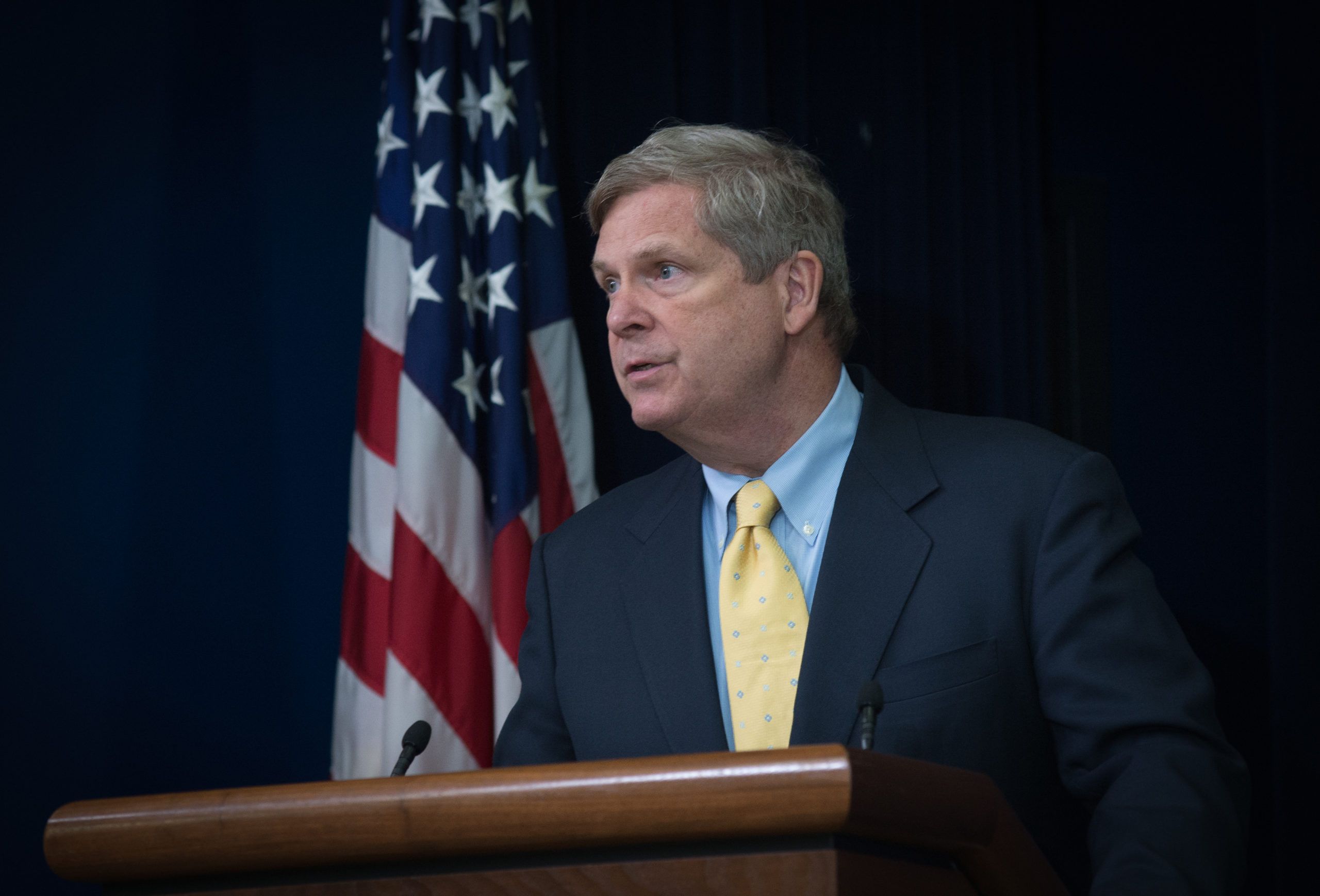Agriculture, one of the biggest emitters of greenhouse gases, also has the potential to store carbon in its soils — through carbon sequestration — and is increasingly being seen as a solution to climate change, or at least a way to minimize global warming in the long term.
The methods of doing so centre around a type of farming called regenerative agriculture as well as rewilding and planting tress. But it’s still early days for the science around it, meaning the real promise and results can be murky.
United States Secretary of Agriculture Tom Vilsack declared as much when he called out monitoring, verifying, and quantifying carbon sequestration as an important area to address in order to boost accountability in the growing space in a press briefing in the wake of his attendance at the COP27 summit in Egypt.
“As a global community, we have much to learn in this space,” he said, adding that the USDA’s work with universities in this area is just the beginning. Most agree that carbon monitoring reporting and verification needs critical improvements to be truly effective.
Vilsack also noted that VC investment in ag innovation lagged compared to other sectors — hence the creation of AIM for Climate, the global initiative led by the United States and the United Arab Emirates to encourage more investment in “climate-smart agriculture and food systems” in order to speed up innovation and address hunger and agricultural resilience.
Numbers tell much the same story. Agrifoodtech VC investment for all of 2021 totaled $51.7 billion. The renewables sector raised $226 billion in H1 2022 alone.
And yet, agriculture, forestry and other land use generate almost a third of all global emissions; livestock farming alone contributes to 14.5%.
Vilsack said in the press call that agriculture innovation needs to be about both reducing those emissions and helping the industry adapt to a warmer planet. The latter, he suggested, is an inevitable reality coming our way.
AIM for Climate at a glance
- The AIM for Climate initiative is taking place over a five-year period, from 2021 – 2025.
- As of this writing, AIM for Climate has 42 government partners and 235 non-government ones, including nonprofits and the private sector.
- AIM for Climate also has a number of innovation sprints where participants work to achieve an agricultural innovation or output in an expedited time period.
- Funding for innovation sprints comes from non-government partners and self-financing.
AIM for Climate updates
- United States Secretary of Agriculture Tom Vilsack made several announcements at COP27 around the progress of the AIM for Climate initiative.
- AIM for Climate has doubled its investments since COP26 from $4 billion to $8 billion.
- The initiative has also tripled both its number of partners and the number of innovation sprints it’s supporting.
- Secretary Vilsack noted during a press briefing that VC investing in ag innovation is still lagging relative to other industries.
New innovations sprints
At COP27, AIM for Climate and Secretary Vilsack talked through several key areas of the initiative’s progress since 2021. That included announcing 22 new innovation sprints, bringing the total number of sprints to 30.
AIM for Climate defines its innovation sprints as “an increase in aggregate self-financed investment from non-government partners to achieve an outcome/output in agriculture innovation and for climate-smart agriculture (CSA) and food systems to be completed in an expedited timeframe.”
Sprints for 2022 focus on smallholder farmers in low and middle-income countries, agro-ecological research, emerging technologies and methane reduction.
AIM for Climate has a list of all 30 innovation sprints announced at COP27. Among them:
- Nitrogen innovation company Pivot Bio joined an Innovation Sprint. With partners, it also committed $291 million to product development for climate-resilient microbial nitrogen fertilizers over the next four years.
- Israel’s Aleph Farms and partners have a $40 million sprint dedicated to cultivated meat.
- The Pan-Africa Bean Research Alliance (PABRA) and partners are developing climate-resilient bean varieties and plans to deliver them to smallholder farmers in Burundi, Ethiopia, Kenya, Rwanda, Tanzania, and Uganda.
- The Foundation for Food & Agriculture Research, the Innovation Center for U.S. Dairy and industry partners will launch the Greener Cattle Initiative. This public-private partnership aims to reduce enteric methane emissions from dairy and beef cattle.
- The International Rice Research Institute (IRRI) and Bayer Crop Science will work with smallholder farmers in Asia and Africa to adopt sustainable seeded rice. The project’s goal is to improve farmer livelihoods and gender equality while reducing emissions from rice production.




